Place your adverts here on InfoDig @ low rates; banner ads, sponsored links and guest articles etc. Contact us
Nigeria’s Communications, Innovation, and Digital Economy Minister, Bosun Tijani, has spent his first year becoming a key figure in the telecom industry. He envisions a world where every Nigerian can access high-speed internet via fibre-optic cables. We examine the progress and challenges towards achieving that vision.
Niger, Nigeria’s largest state by landmass, borders six other states and the Republic of Benin. It also hosts a crucial 3,500-kilometre fibre optic cable network, owned by multiple operators and is the 6th largest fibre network that supports high-speed internet across Nigeria.
Despite this, Niger State’s 6.7 million residents, most of whom live on less than $6 a day, get no high-speed internet from the fibre infrastructure under their feet. According to Suleiman Isah, Niger State’s Commissioner for Science and Technology, internet access in the state is provided by less than 400 telecom masts that serve the vast region.
That there is so much high-capacity fibre underfoot and yet no high-speed for Niger state residents highlights the complexity of Bosun Tijani’s challenge to provide internet connectivity by fibre to millions of Nigerians outside major cities like Lagos and Abuja.
Nigeria has 79,212.4 kilometres of fibre optic cables installed, predominantly serving urban centres like Lagos, Abuja, and the Federal Capital Territory. Most of that is intrastate fibre—last-mile delivery to end users. Only 35,000km of it is backbone fibre, a network of fibre cables that draw high-speed internet from the various international submarine cables that serve Nigeria. Nigeria has eight cables, seven of which terminate in Lagos State. These cables include Nigeria Cameroon Submarine Cable (NCSCS), the SAT-3/WACS, MainOne, Glo 1, West Africa Cable System (WACS), African Coast to Europe (ACE), the Equiano cable owned by Google and the most recent of them, 2Africa owned by META. Besides 2Africa, which landed in both Lagos and Akwa Ibom; every one of these cables terminates only in Lagos. The backbone network then distributes these cables across Nigeria.
While states like Lagos and Abuja are well served by strong backbone and last-mile delivery, states with the majority of citizens in the lower income range, such as Niger, Sokoto, Ebonyi, Kebbi, and Jigawa, remain underserved, primarily due to lower average revenue per user (ARPU) figures compared to urban areas, which discourage investment by private sector players uncertain about the returns on those investments.
While the business case for bringing fibre connectivity to major cities is clear, depending on private companies to connect states where the business case is weak has created a divide that the government believes is stifling the growth and development of its rural areas and Nigeria’s economic potential.
The proposed solution is a national fibre backbone that connects every state with the expectation that fast internet access will lead to increased productivity and economic outcomes. This has been a thesis of Nigeria’s digital leaders since Omobola Johnson assumed the Minister of Communication Technology role in 2011, and making it a reality is a critical part of Bosun Tijani’s agenda. He envisions adding 90,000km of fibre backbone to bring Nigeria’s total backbone network to 125,000km, making it the third longest in Africa, after South Africa and Egypt.
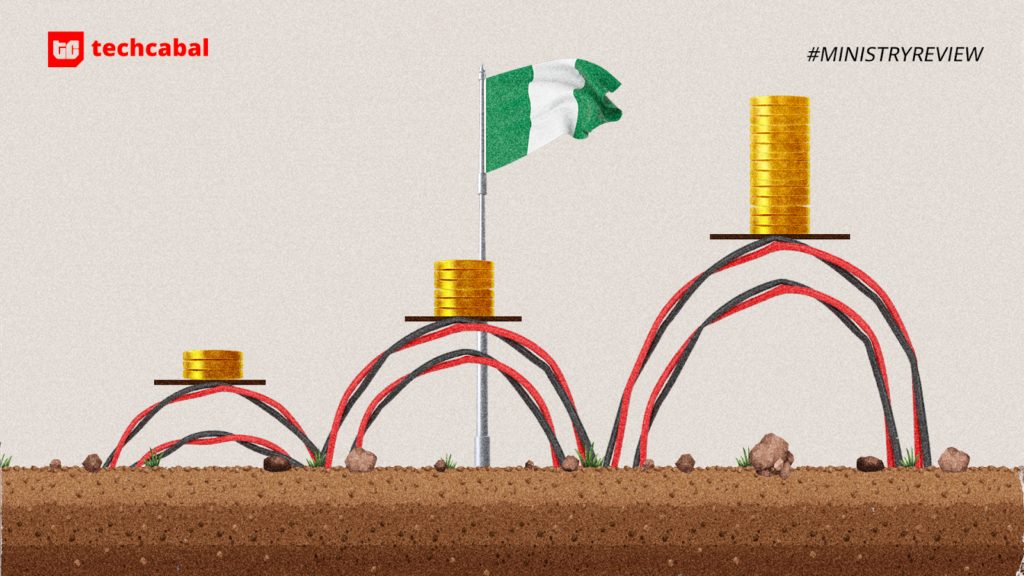
“Everyone knows that if you raise the quality of connectivity in any country, you raise the GDP. The projection in Africa is that you get almost a 2.5% contribution to the GDP for a 10% increase in connectivity,” he told TechCabal in Abuja.
His ministry’s strategic blueprint, released in October 2023, focuses on enhancing connectivity for public institutions across all 774 local governments.
“Improved quantity and quality of connectivity will create short and long-term opportunities by stimulating a more vibrant digital ecosystem,” Tijani said in a post on X, marking his first year as a minister.
The fibre rollout aims to boost internet penetration by 70% by 2025 and achieve 80% coverage for underserved populations by 2027. The Strategic Blueprint also targets a 300-500% investment increase by the end of 2027. Tijani describes these goals as “building the backbone of the digital economy.”
Bridging the connectivity gap demands politicking and actively courting friendships with state officials, a slow process in a government where every leader has separate objectives and agendas. In the past year, Tijani has found few friends willing to make the changes in approach that his plan will demand. Some governors, such as Hope Uzodinma in Imo, have been receptive. But there is still much work to do to get more buy-in.
Suleiman Isah became Niger’s Commissioner for Science and Technology in August 2023 after a career in IT security at the Federal Inland Revenue Service. According to him, the state has actively tried to attract operators by lowering right-of-way fees, which gives companies the right to lay fibre cables, to ₦145 per metre for the past six years. They haven’t achieved as much success as he would want.
Other states, facing revenue challenges, are reluctant to give up the revenue from right-of-way fees linked to infrastructure projects. Many states do not feel fee waivers translate to increased internet connectivity, and telcos have expressed reluctance to lay fibre cables in new markets without lower fees as an incentive. Besides, even when fees are lowered or waived, improved connectivity doesn’t always follow.
In March 2024, Niger State waived right-of-way fees for one operator while offering incentives to other telcos. Yet, Isah told operators at a breakfast meeting organised by the Association of Telecommunication Operators of Nigeria (ATCON) in July 2024, “We don’t have any broadband presence, the highest presence we have is fibre to tower.”
These tensions and mismatch of expectations frequently result in states denying telecom operators access to deploy infrastructure.
In this fee conflict, it is the people who suffer. Across Nigeria, 97 communities — villages and local governments home to about 28 million people—lack internet access entirely, according to a spokesperson for the Nigerian Communications Commission (NCC). Only 39% of the population currently resides within 5 kilometres of a fibre network, with Lagos state having a high of 85% and Jigawa with a low of 12%, according to the White Paper on Broadband released by the Federal Ministry of Communications, Innovation and Digital Economy.
The Broadband Challenge in Numbers
Even in a perfect world where states and telcos get along, there’s still the matter of how expensive fibre optic deployment is.
Fibre Broadband Association estimates deploying underground cables costs between $11 and $24 per foot. Using the lower figure, 90,000km of cable would cost $3.2 billion, higher than the government’s $2 billion estimate.
Nigeria’s National Broadband Plan 2020-2025, launched in 2020 by former Minister of Communications and Digital Economy Isa Ali Pantami, aimed to lay at least 120,000 kilometres of fibre optic cables by 2025. In 2023, his successor, Tijani, revised the goal to 90,000 kilometres by 2027, with $2 billion in investment required to reach that target.
A year into Tijani’s tenure, there have been some significant developments.
The release of the broadband blueprint in July 2024 was met with enthusiasm by industry operators and financiers, with a wide range of investors immediately scrambling to meet with the minister and his team. There is reticence to speak on the record as the ministry works out the details of the plan and as formal agreements have yet to be signed. However, one senior leader at a major telco operator claimed operators are enthusiastic about the blueprint
“It borrows the best part of structures like NIBBS or LNG. If operators are allowed to bring their existing assets into the proposed SPV, they form the skeleton of a national backbone relatively quickly and that structure can grow rapidly through both private and government investments. We’re keen to see finalised implementation structures and project plans.”
According to Tijani, seven development finance institutions (DFIs), including the World Bank, Islamic Development Bank, and Africa Development Bank, have committed to providing the $2 billion needed.
“They (DFIs) have formed a group and are already working. We are setting up a project management office. FEC [The Federal Executive Council of Nigeria] has already approved so that is being sorted,” Tijani told TechCabal. There is a target of 12 months to secure the money for the project. The minister acknowledges that any delay in the fundraising would likely delay the project.
Securing $2 billion will set a new record in foreign direct investment into the telecom industry. The biggest investment in the industry was approximately $942.8 million secured in 2019. Investment has since declined to less than $400 million in 2022.
“We have significant evidence in Nigeria that driving significant investment into the telecommunications space accomplishes that, as seen by the economic impact of the introduction of a mobile telephone, the landing of submarine cables at the coast and the rollout of terrestrial fibre across the nation,” Fola Fagbule, Deputy Director and Head, Financial Advisory, Africa Finance Corporation (AFC) told TechCabal.
He noted that expanding broadband access across the country could have a similar developmental impact as previous large-scale initiatives.
“So we are keen to see this project succeed, and we would be happy to support it in all the ways we can,” Fagbule said.
Driving the agenda: The Special Purpose Vehicle
The minister has also moved to establish a structure for using the funding. President Bola Tinubu approved a Special Purpose Vehicle (SPV) in May 2024 to oversee and manage the fibre network, with deployment expected to begin in early 2025.
The SPV will likely mirror the joint venture arrangement in the Nigeria Liquified Natural Gas (LNG) model, where the government owns a minority non-operating stake, and the private sector owns the majority stake. The structure also makes provisions for concessional debt from the DFIs, which offer more generous conditions, including below-market interest rates and grace periods in which the loan recipient is not required to make debt payments for several years. Concessionary debt from development finance institutions starts from as low as 4% per annum and is significantly cheaper than the cost of equity, where telcos like MTN or cable companies like Equinix might seek to return 6% to 20% of their cost of capital to investors. Such debt also frequently comes with moratoriums lasting as long as ten years. Thus, the government is focused on raising the bulk of the $2 billion as concessionary debt, funding the extension of fibre backbone to parts of the country where returns would not be competitive for standard commercial entities.
The SPV, which will be executed as a private entity with an independent board of directors and team, would pay the debt as a going concern. The Federal Government will guarantee the debt.
The business model would include sales or lease of cable services to ISPs, Corporations, last-mile companies, and Mobile Network Operators (MNOs), who would then connect the fibre to their towers to improve the quality of service and broadband. The operators can also invest their assets in the SPV.
The SPV would give the investing operators interstate and backhaul access to areas of the country where they have not built infrastructure yet. They would then be able to commercialise their assets more aggressively than they might if they had to sign those agreements with every other operator individually and sign up customers in every region of the country.
“A final critical point is that if the SPV succeeds, then their own invested assets grant them equity in a major and potentially very lucrative new entity,” said the senior leader at a major telco operator.
Many industry experts are cautiously optimistic about the SPV and its potential to achieve the minister’s internet plans.
“(The SPV) has to include industry practitioners who understand the challenges of fibre infrastructure deployment, not merely government appointees without the necessary expertise,” said Rotimi Akapo, partner and head of Telecommunications, Media, and Technology at Advocaat Law Practice.
There’s also the matter of bringing state governments on board. While Tijani has held meetings with state commissioners for Science and Technology or ICT, including those from Imo, Taraba and Lagos, formal agreements are not in place yet.
“We are yet to have any formal meeting on the project,” Isah said in an interview with TechCabal. However, the state is discussing with the NCC on the creation of incentives for waiving right-of-way fees. Niger state is also open to public-private partnerships (PPP) with data centre providers and business process outsourcing (BPO) operators to ensure the additional fibre is fully utilised.
Isah believes improved communication between the ministry, the NCC and states will improve synergy. It will also help incentivise states to protect fibre cable infrastructure. The minister is a necessary lynchpin in settling on a common standard and approach and convincing these various entities to adopt them.
Managing a growing telecom sector
Interest in investment in the telecom sector is slowly increasing despite industry challenges. In June 2024, ntel, the successor to NITEL (Nigerian Telecommunications Limited, Nigeria’s previous monopoly telephone service provider), announced plans to raise $550 million following the appointment of Adrian Woods as the new CEO. 9Mobile, one of Nigeria’s top four telcos, which has struggled over the last X years, was acquired by LightHouse Telecoms in July 2024, hoping to rejuvenate its fortunes. Industry watchers see these as positive signals.
Telecom operators say a definitive structure and defined fees and agreements must come together quickly for the minister’s plan to succeed. Nigeria’s states will play a key role in the success of the SPV, and thus far, their approaches to taxation, right-of-way fees and infrastructure development are anything but uniform. Right-of-way fees in states like Osun have soared from ₦1,350 to ₦3,000. In contrast, states like Katsina, Edo, Nasarawa and Anambra have waived right-of-way fees, while Kwara and FCT charge ₦1 and ₦145, respectively. The varied state approaches make strategy and planning challenging and do not encourage large-scale investing.
State agency officials’ denial of access to tower locations has also become rampant. In 2023, over 18,000 location access denials were recorded, with states imposing hefty fines for payment delays, according to data shared by IHS Towers. Telcos like MTN Nigeria faced fines exceeding ₦1 billion from Osun and Cross River States for right-of-way violations. A company spokesperson told TechCabal that MTN is currently engaging the states.
For states like Lagos, Cross River, Osun, and the FCT, which have championed the laying of fibre duct infrastructure through public-private partnerships (PPP), and are leasing that infrastructure out to operators, there are quality concerns.
“Some operators are not happy with the quality of civil works, the ducts, and other infrastructure developed by concession companies,” Akapo said. The SPV is expected to set a common standard for the industry. The telcos, who would be part of the SPV, will be required to participate in setting this standard.
This raft of challenges has some industry veterans recommending other approaches to solving the problem of Nigeria’s digital connectivity gap.
Is fibre the right approach?
One of the challenges that concerns industry players is how viable the returns will ultimately look to operators and the scrutinising eyes of investors and bankers.
“A national fibre backbone requires a sizable investment that will take a long time to generate a commercial return,” says Ladi Okuneye, CEO of UniCloud Africa. “Securing funding is challenging, especially when much of Nigeria’s geography does not promise a clear return on investment.”
“My suggestion would be to blend the fibre deployment with a combination of satellite connectivity and other terrestrial wireless solutions, especially in the early stages.” Okuneye proposed. “This will enable the fibre rollout to be prioritised around areas of the country where commercial, bandwidth-hungry end-user applications are already in use.”
The Minister does recognise the limitations of fibre as a sole panacea, hence he’s launched yet another initiative – Project 774 LG Connectivity, which aims to connect all 774 Local Government Secretariats in Nigeria through existing infrastructure from two entities that sit under his purview, NigComSat Limited and Galaxy Backbone. NIGCOMSAT owns and operates the Nigerian Communications Satellite systems, while Galaxy is a government-owned ICT & internet provider that owns a wide range of assets. While there are benefits to the blended approach, satellite connectivity is also expensive. The current NigComSat-R1 will be decommissioned in 2025 when it expires after 15 years in orbit. The country is currently seeking investments in two satellites that would replace NigComSat-R1. Launching a single satellite can cost anywhere between $10 million and $400 million depending on the vehicle used.
Yet another area of concern is how long it will take to deploy 90,000 kilometres of fibre across Nigeria’s 774 local governments. Jinmi Oluanuiga, who helped draft the 2012 National Broadband Plan, estimates that deploying 50,000 kilometres could take up to 20 years.
To achieve 90,000km of fibre in 2 years, the SPV must build 123 km daily for two years. To make that happen, every bolt and nut on the project wheel must function without downtime throughout the period.
Kenya, with a smaller land mass, previously planned to lay 100,000km in five years and revised it to two years in April 2024 when it became obvious they could use existing infrastructure to achieve the target. This required reviewing the deployment strategy by partnering with Kenya Power and Lighting Company’s national grid infrastructure. Rather than dig new holes for fibre optic cables, the Kenyan Ministry of Information, Communications, and Digital Economy uses the power lines for high-speed internet roll-out.
Tijani’s SPV playbook already borrows some elements from Kenya’s. But to meet its own objectives, the SPV must be up and running, and the $2 billion must be in the bank waiting for immediate deployment.
Getting it done
As a political appointee, Tijani has set ambitious timelines for himself, and an impatient public fed on tales of tech industry expects an action man who will immediately solve all problems. In a political environment where a cabinet reshuffle could send the minister out of office, a lot hinges on speed.
The reality of delivering meaningful digital development is considerably more measured. For the Minister’s broadband plan to come into focus, there is an armada’s worth of preliminary work that must be completed – technical feasibility studies to determine what existing assets might fit into the SPV, technical feasibility studies to determine what methods of fibre deployment will be most cost-effective within Nigeria’s varying terrains, technical feasibility studies to determine what fibre thicknesses are suitable for what areas. In fact, the technical feasibility studies being conducted now rest on the back of research and studies done by previous ministers. The Nigerian National Broadband Plan 2020-2025, launched by former Minister Isa Pantami, is frequently referenced.
While institutions like the AFDB and the World Bank have indicated support for the project, that support must be converted into formal commitments that are approved by risk committees. These committees will want to see every last one of the aforementioned feasibility studies, not just technical feasibility studies but also commercial viability studies, environmental impact surveys, and more.
Getting the SPV approved by the Federal Government and the Federal Executive Council (FEC) is already a meaningful success for the minister. And yet, it is only a first step. The internal operational structure of the SPV has to be defined, and leaders must be chosen for what will be a significant operating entity in its own right. The structure in which funds will enter that entity has to be defined, along with how contributions from the varying participants in the SPV will be valued.
Detailed engagement with the states, operators, and other financiers is urgent, but it must necessarily wait until the above work is either completed or well enough underway for the messaging to those entities to be meaningful.
So, how should the public judge his success or lack thereof?
Progress on some of the points above will provide meaningful signals.
The Minister expects financial arrangements with the DFIs to be in place within six months. If he can announce significant formalised funding commitments within that period, that will show that he is not alone in this; the money is also onboard.
The SPV entity needs to be formally constituted with leadership with a pedigree to deliver work of this magnitude and impact. The quality of the team he announces and their readiness to get to work will be a strong indication of the likelihood of success for this project.
Once those milestones are hit, one would expect to see more robust engagement with the states and other government structures that need to support this plan. Sign-off on uniform terms within the next year to 18 months would be a really positive signal.
Ultimately, it may be less important that the Minister lay 90,000km of cable before 2027 than that he has come up with a vision for funding and delivering a significant infrastructure project that would change Nigeria’s digital future and that he has secured the buy-in of the government and serious financial backers. If he can bring together all of the pieces that would make that vision a reality, he would have succeeded tremendously before the first piece of cable gets laid.
* -The data on 97 communities across Nigeria is from December 2023.

 2 hours ago
36
2 hours ago
36
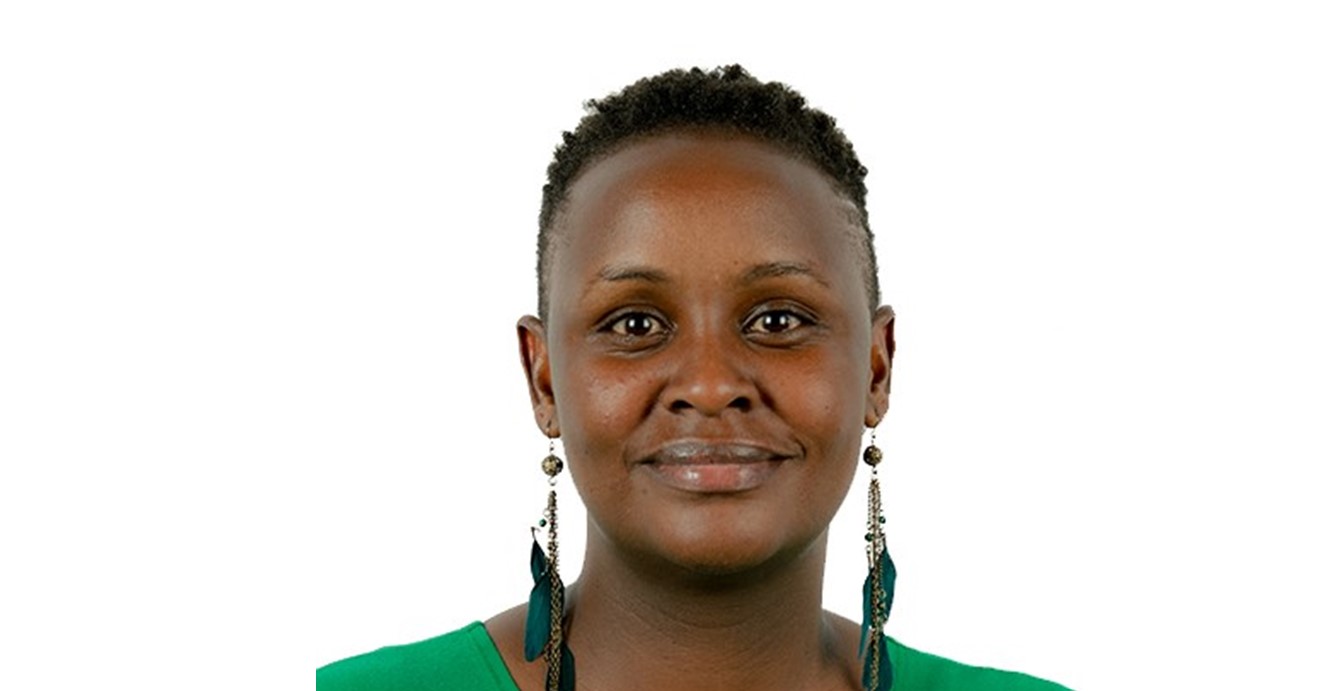



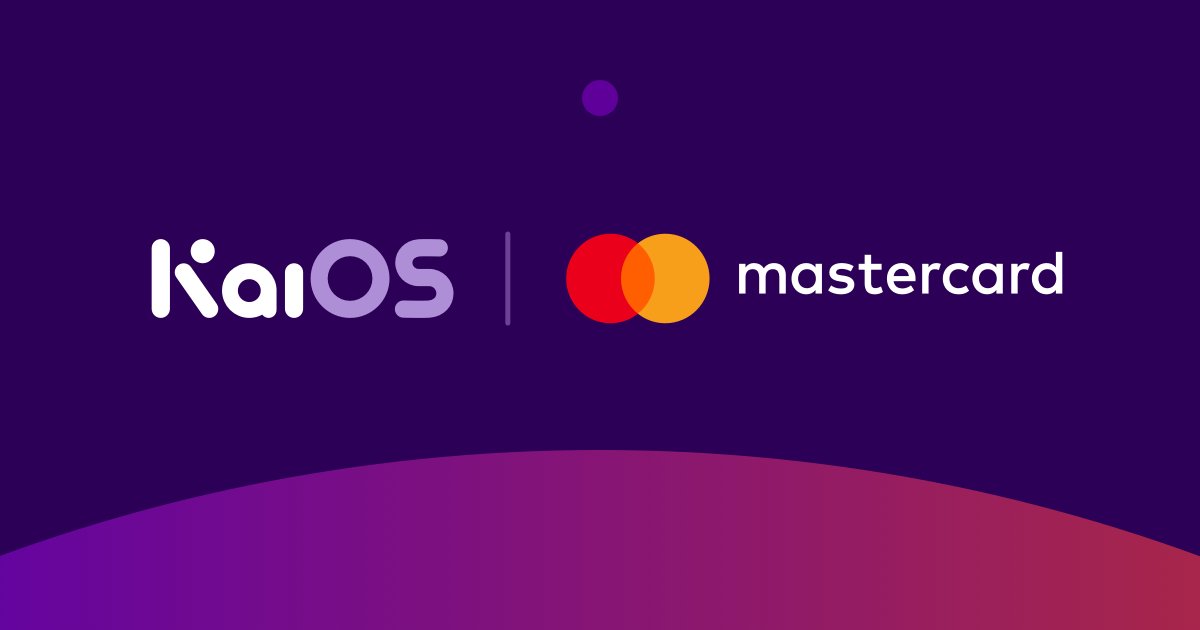

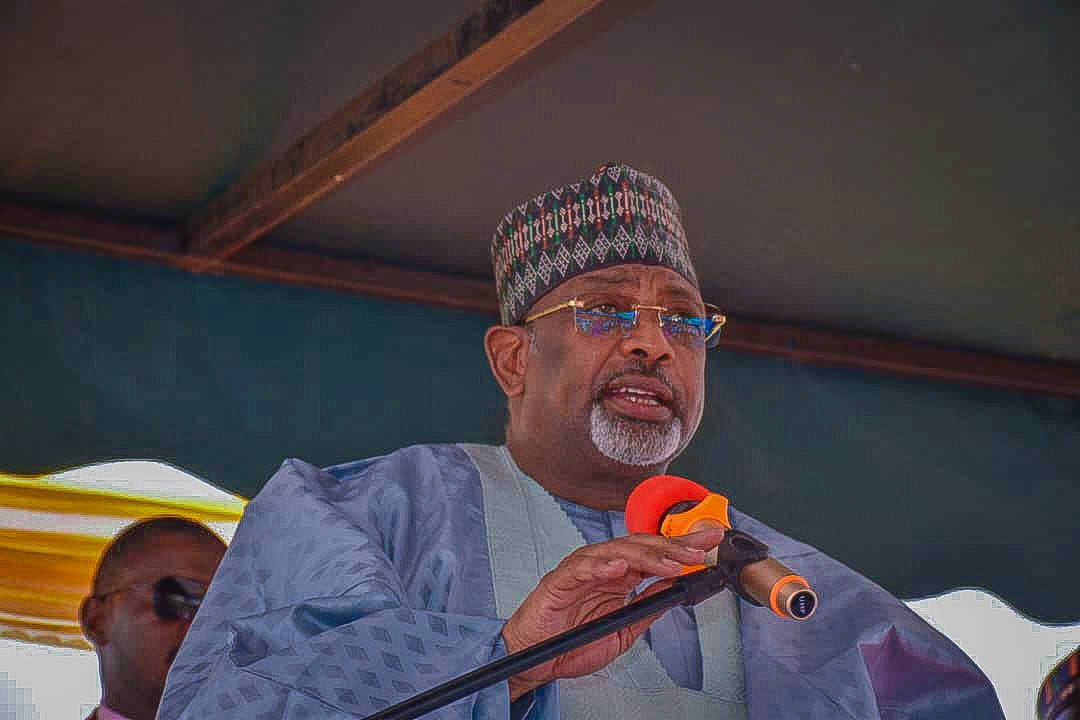




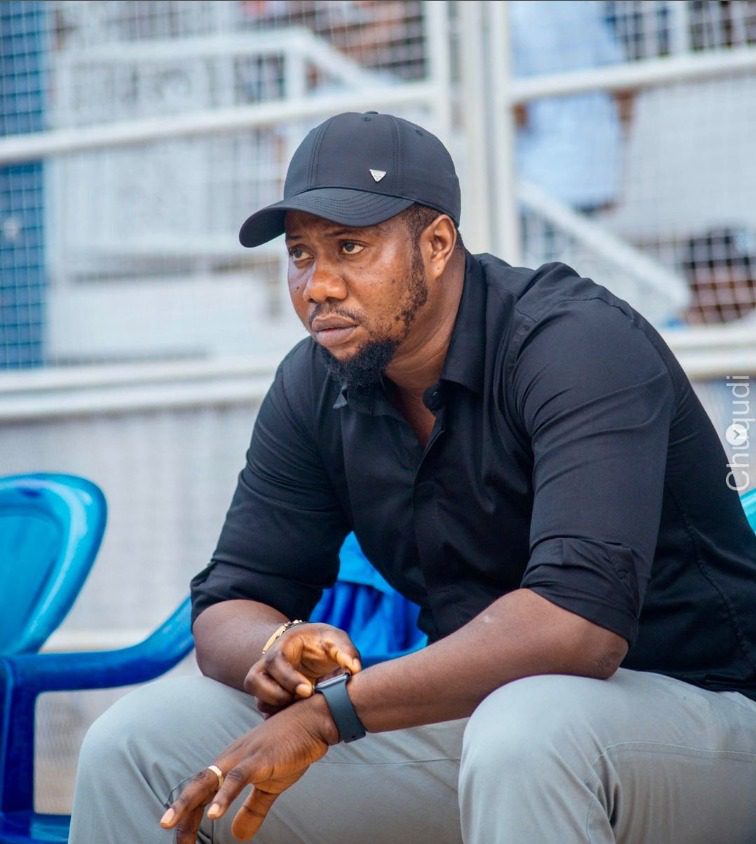

 English (US) ·
English (US) ·